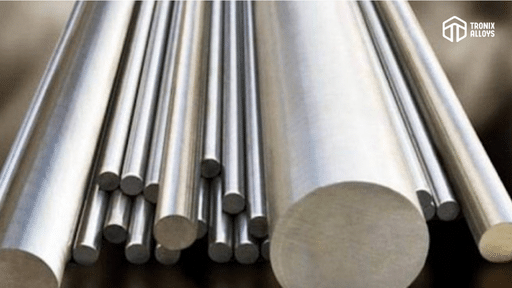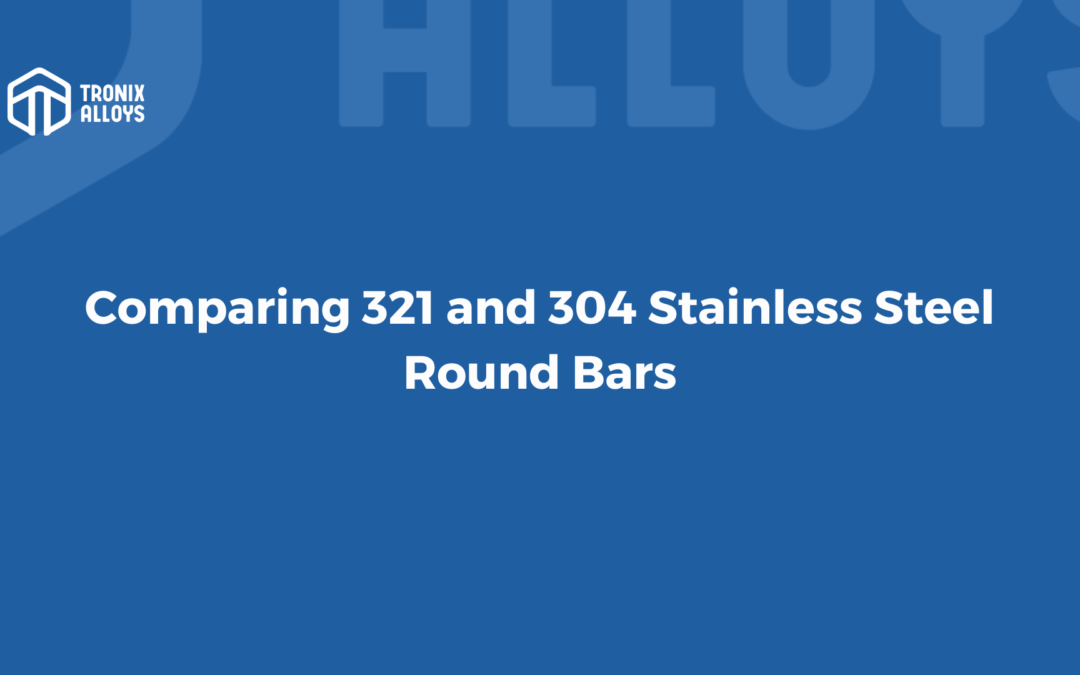
SS 304 Specification
The 304 stainless round bar steel grade with a high chromium and nickel content. Due to this high concentration of chromium and nickel, it can withstand oxidative and corrosive media with ease. The items in this grade can be formed as well as welded with ease. In addition to providing excellent lower temperature service, they are also easily cleaned and fabricated, ensuring that they maintain an appealing appearance at any temperature.
Types Of 304 Stainless Steel
Three varieties of stainless steel of type 304 or 1.4301 are available: 304, 304L, and 304H. All three are similar except for their carbon content.
- A low carbon steel grade such as 304L has a carbon content of 0.03%, while 304H is a high carbon steel grade with a carbon content concentration ranging from 0.04% to 0.10%. A balanced carbon content of 0.08% is considered to be standard in the 304 grade.
- 304L grade is used for welding applications requiring no post-weld annealing and exhibiting a low degree of ductility. 304H grade is used in high-temperature applications where the higher carbon content is used to preserve the strength of the steel. Both parameters are balanced with the standard 304 grade, which is capable of being used in moderately serviced systems.
304 Stainless Steel Mechanical Properties
The 304 stainless steel grade is known for its excellent mechanical properties. Its comprehensive strength is 210MPa and its tensile strength is between 500 and 700 MPa. As a result of their proof stress of 190MPa, this grade is also easily elongated by 45% and their hardness is 215 Max HB. In addition to this, the item within this grade has a tensile strength ranging between 500 and 700 MPa.
Types of SS 304 stainless steel round bars
- Stainless Steel 304 Round bar
- ASTM A276 AISI 304 T-Bar
- ASTM A276 AISI 304 Half-Round Bar
- 304 Stainless Steel Round Bar
- 304 Stainless Steel Rod
- SS 304 Rectangular Bar
- 304 Stainless Steel Flat Bar
- 304 Stainless Steel Square Bar
- ASTM A276 AISI 304 Hexagonal Bar
- 304 Stainless Steel Threaded Bar
- ASTM A276 AISI 304 Rebar
- Stainless Steel 304 Hollow Bar
- ASTM A276 SUS304 Precision Ground Bar
- ASTM A276 AISI 304 Precision Ground Stock
- ASTM A276 SUS304 Triangle Bar
- 304 Stainless Steel Hex Bar
321 Stainless Steel Properties

This stainless steel grade has a yield strength of 205Mpa and a tensile strength of 515Mpa. With a maximum hardness of 217 Brinell, these components can be extended by 40%. With a melting temperature between 1398 and 1446 degrees C, the components exhibit superior corrosion and oxidative resistance properties. Additionally, the components possess a high electrical resistivity and linear thermal expansion coefficient.
SS 321 Material Properties
A 321 is an austenitic grade of steel which is designed with a density of 0.232 lbs/in3. It has a melting range that ranges between 2550 and 2635 degrees Fahrenheit. Its electrical resistivity at 20°C is 72 Microhm-cm. As far as mechanical properties are concerned, the grade has a minimum yield strength of 30,000 psi and a minimum ultimate tensile strength of 75,000 psi and has a hardness rating of 217 Brinell, a minimum elongation of 40% is possible and it is highly resistant to bending.
Stainless Steel 321 Applications
In addition to being a versatile metal, stainless steel 321 is a metal of choice in applications where the temperatures reach 900 degrees Celsius. These components are able to resist intergranular corrosion. This results in them being able to be used in machinery that designs and manufactures chemical processing equipment at high temperatures, such as heat exchangers, aircraft exhaust collectors, furnace components, thermal oxidizers, and heating elements. The Higher Creep-Rupture Property Makes These Components Ideal For Utilization In Products Like Boilers, Refinery Equipment, And Pressure Vessels Because Of Their Creep-Rupture Properties. In addition to expansion joints and bellows, this type of steel can also be found in mineral processing systems.
Astm A276 321 Stainless Steel Round Bars are available in different types
- UNS S32100 Stainless Steel Hollow Bar
- Alloy 321 Rebar
- Stainless Steel 321 Threaded Bar
- Alloy 321 Hexagonal Bar
- Stainless Steel 321 Hex Bar
- Alloy 321 Triangle Bar
- Stainless Steel Alloy 321 Precision Ground Stock
- Alloy 321 Precision Ground Bar
- Stainless Steel 321 Round Bar
- Stainless Steel Alloy 321 Half-Round Bar
- Alloy 321 T-Bar
- UNS S32100 Stainless Steel Rounds
- Stainless Steel 321 Square Bar
- Stainless Steel 321 Flat Bar
- UNS S32100 Stainless Steel Rectangular Bar
- Stainless Steel 321 Rod
Difference Between 304 Stainless Steel And 321 Stainless Steel Round Bar
It is important to note that stainless steel types 304 and 321 are some of the most versatile grades in the family of stainless steels. As a matter of fact, the SS 321 grade is similar in some aspects to the stainless steel 304 grade; but there are some marks which distinguish these two grades from each other.
- Stainless steels such as SS 321 are stabilised by a small confluence of titanium, while SS 304 is a low carbon nickel-chromium grade which does not require any stabilizing agent to function effectively.
- Titanium content in 321 stainless steel bar gives them greater resistance to carbide precipitation and corrosion than 304 stainless steel.
- When compared to their counterpart, SS 304 grade and types possess good anti-sensitization properties and are useful in applications such as intergranular corrosion resistance.
- The stainless steel 304 is designed to offer resistance to oxidation up to 870 degrees C during in-service conditions. For continuous service, it can reach 925 degrees C. The stainless steel 321 can cope with 900 degree C temperatures.
- It is apparent that grade 321 SS grades have an advantage in fatigue strength over grade 304. This advantage is also obvious in tensile strength.
- Compared to 304-grade items, the 321 grade exhibits a slightly greater temperature reduction factor when subjected to high temperatures.
- With a moderate stress fracture and ductility, the 304 grade is designed to resist fracture in moderate stress conditions. The 321 grade has a higher stress fracture and ductility.
Steel Grade 321 and 304 Stainless Steel Fabrication Differences
Stainless steel grades 304 and 321 can be distinguished by their titanium content; however, carbon content is the main difference. Carbon concentrations of 0.08 percent and above are common in the 321 grade of carbon. Despite its excellent yield strength, its ductility within the system is affected by the concentrations.
304 stainless steel has a high carbon content of 0.07 or less, which makes it difficult to machine and fabricate, causing it to have difficulty being processed due to its superior strength. 304 stainless steel is mild carbon steel with a carbon content of 0.07 or less, which makes it much easier to fabricate and machine components within this range.
Chemical composition of stainless steel 304 vs 321
These two grades of steel, 321 and SS 304, have similar chemical composition to each other. Both contain carbon, manganese, chromium, silicon, phosphorous, sulfur, nickel, and nitrogen in varying proportions. They can be differentiated based on certain chemical compounds.
- A titanium component is used to stabilize the components of the 321 grade, whereas no titanium component is used in the 304 grade and no stabilizing component is required.
- Even though the 304 grade may have a slightly lower content of nickel than the 321 grade, both of these grades possess similar corrosion-resistance properties when compared to one another.
- There is a greater amount of carbon in the SS 321 grade than there is in the SS 304 grade as measured by volume.

